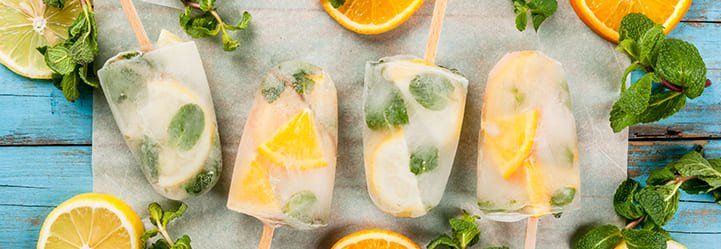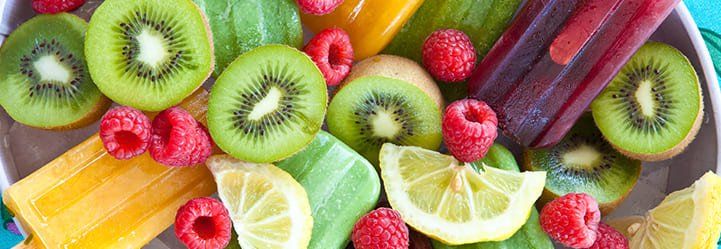Frozen fruit popsicles, fruit puree and the ice cream industry
Alimentos SAS • Jan 19, 2022
Popsicles have been synonymous with hot summer days for decades in the United States. Today, manufacturers can aim to make them healthier while keeping them flavorful and alluring for consumers, using fruit purees as ingredients. Read on to learn more about frozen fruit popsicles.
Popsicles: a happy accident turned into a business
Popsicles are an American staple product with over a hundred years of history. In 1905, 11-year-old Frank Epperson was mixing a soft drink (made from flavored powder and water) in a cup using a stirring stick. The story goes, he inadvertently left it outside on his San Francisco porch overnight. Chilly temperatures froze the blend –stick included, which served as a handle. By morning, he found it and thought it would make for a nice treat (Fiegl, 2010).
As an adult, Epperson commercialized his invention, patented it, and after a few years sold it to the Joe Lowe Co (Fiegl, 2010). In 1989, industry giant Unilever acquired it. The product is so popular, people usually call any ice-on-a-stick to treat a popsicle (Pope, 2015).
Popsicles are still going strong, even in such a dynamic industry as the frozen dessert industry. There are different types of ice cream. For example, sorbetto, liquid nitrogen ice cream and real ice cream. In addition, there are other special products, such as the various types of mochi.
Popsicles today
According to Precision Reports (2021), the global ice pops market (including popsicles and freezer pops) value reached 4706 million dollars in 2020. The firm expects it to rise to 6851 million dollars by the end of 2027 with a Compound Annual Growth Rate (CAGR) of 5.4% between 2021 and 2027.
In recent years, two million popsicles have been sold annually in the United States (Country Living Staff, 2010). Today there are many flavors, but frozen fruit popsicles still lead the pack.
Popular frozen fruit popsicles
It is believed that Epperson’s original products came in seven flavors: cherry, lemon, orange, banana, grape, watermelon, and root beer. Unilever expanded the flavor range upon acquiring the brand, but cherry remains number one. There even is a National Cherry Popsicle Day –August 26th (Country Living Staff, 2010. Fill Your Plate, 2011).
The success of frozen fruit popsicles should not come as a surprise when seen in context. Sharing the frozen dessert category with popsicles, ice cream is a product that also heavily features fruit flavors. Strawberry is third among popular ice cream flavors in the U.S. after chocolate and vanilla (YouGovAmerica, 2020). Furthermore, cherry and blueberry flavors are trending in global ice cream production (FONA International, 2021).
Catering to consumer interests
Nowadays, there is consumer interest in healthier and functional food products (Fortune Business Insights, 2021). Moreover, the rising demand for low-sugar and low-calorie options drive the American frozen desserts market. Additionally, the development of new products is a key factor behind the industry’s growth in recent years (Grand View Research, 2020, b).
Such a scenario puts the spotlight on innovative products that cater to health-concerned consumers who still want to enjoy delightful treats. Frozen fruit popsicles made using fruit purees are an outstanding example.
Fruit purees serve as natural flavorings and sweeteners. They help enhance food products' taste, color, and texture while bringing nutritional content. Plus, they instill an intense fruit flavor free of artificial components (Grand View Research, 2020 a. Allied Market Research, 2021. Transparency Market Research, 2021).
On top of these traits that tend to consumers’ preferences, fruit purees are also beneficial for producers. Why? Well, because they are more efficiently handled than produce (Dohler, n.d.).
As seen,
frozen fruit popsicles are poised to hold on to their popularity. Using natural ingredients to make them, like fruit purees, has the power to grow the allure of this classic product to health-driven consumers.















